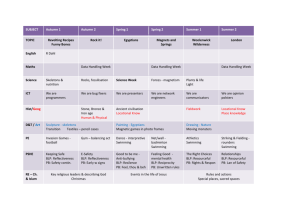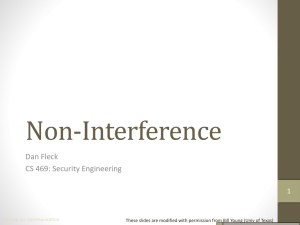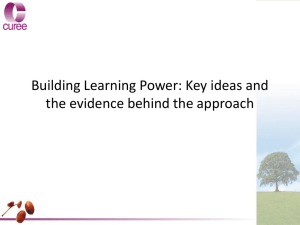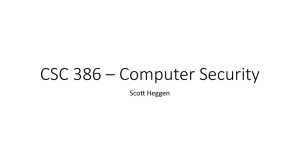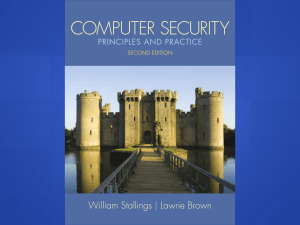3. LBAC-System-Z
advertisement
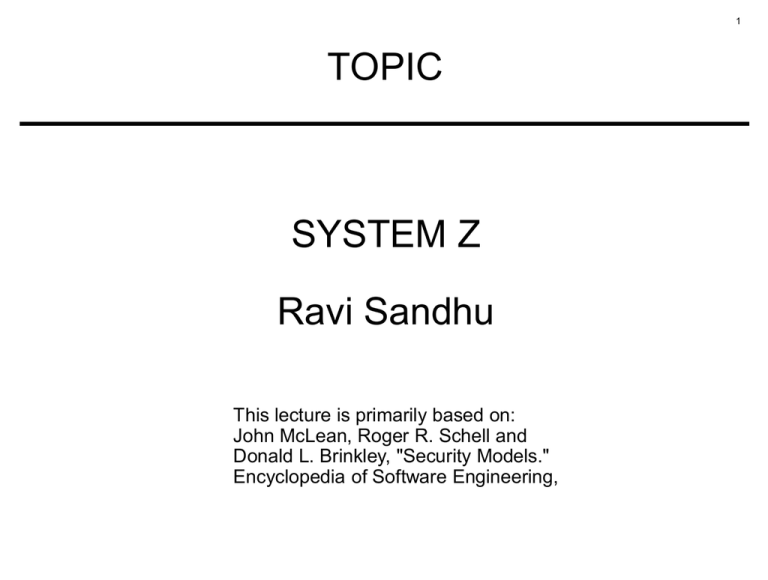
1
TOPIC
SYSTEM Z
Ravi Sandhu
This lecture is primarily based on:
John McLean, Roger R. Schell and
Donald L. Brinkley, "Security Models."
Encyclopedia of Software Engineering,
2
BLP
•
•
•
•
•
•
•
•
S, fixed set of subjects
O, fixed set of objects
L, fixed lattice of security labels
F: S U O → L, assignment of security labels to subjects
and objects
M: S X O → 2{read,write}, access matrix
<F,M>, system state
V is set of all possible system states
A system consists of
–
–
–
An initial state v0
A set of requests R
A state transition function T: V X R → V
3
BLP
•
<F,M> is read secure (simple security) iff for all s, o
read in M[s,o] → F(s) ≥ F(o)
•
<F,M> is write secure (star-property) iff for all s, o
write in M[s,o] → F(s) ≤ F(o)
•
<F,M> is state secure iff it is read secure and write
secure
4
BLP BASIC SECURITY THEOREM (BST)
5
BLP WITH TRANQUILITY
•
F does not change
•
Fv(s) = Fv0(s)
•
Fv(o) = Fv0(o)
•
BLP with tranquility is intuitively secure
•
BLP with tranquility satisfies BST and thereby is
formally “secure”
BUT
•
System Z is intuitively (and egregiously) insecure
•
System Z satisfies BST so BST is useless
6
SYSTEM Z
•
Initial state v0 is state secure
•
Single transition rule: on any read or write request all
subjects and objects are downgraded to system low
and the access is allowed
•
System Z satisfies Basic Security Theorem
7
BLP WITH HIGH WATER MARK
•
F(o) does not change, Fv(o) = Fv0(o)
•
F(s) can change but
•
–
only upwards, Fv(s) ≥ Fv0(s)
–
only as far as user’s clearance, Fv(s) ≤ F(user(s))
–
every change upwards in F(s) requires removal of write from M[s,o]
cells where after the change F(s) > F(o)
BLP with high water mark is considered intuitively
secure (and also satisfies BST)
8
BLP WITH LOW WATER MARK
•
F(o) does not change, Fv(o) = Fv0(o)
•
F(s) can change but
•
–
only downwards, Fv(s) ≤ Fv0(s)
–
can downgrade all the way to system low
–
every change downwards in F(s) requires removal of read from M[s,o]
cells where after the change F(s) < F(o)
BLP with low water mark is considered intuitively
insecure (and also satisfies BST)
–
memory of higher level reads can be retained in RAM, cache, CPU
registers, program counter, etc
9
NON-INTERFERENCE
•
Views the system as a black box with input/output
events that are caused by users
•
McLean’s paper assigns an input event the same level
as the user’s clearance. This is not correct. More
correctly an input event can be caused by a user but its
security level should be specifiable by the user.
•
Reasonably intuitive and intuitively secure for
deterministic systems
•
For non-deterministic systems it pushes intuition
boundaries
10
NON-INTERFERENCE
Inputs
H
L
L
H
H
L
H
H
time
H
Outputs
H
H
L
L
H
L
11
NON-INTERFERENCE
Inputs
H
L
L
H
H
L
H
H
time
L
Outputs
L
L
12
NON-INTERFERENCE
Inputs
L
L
L
time
L
Outputs
L
L
13
NON-INTERFERENCE
14
NON-INTERFERENCE
15
NON-INTERFERENCE vs BLP
Generally understood that non-interference can deal with
storage covert channels but not with timing covert channels
16
NON-INTERFERENCE AND ENCRYPTION
X
V
XOR
X: plaintext
V: encryption key (one-time pad)
Y: ciphertext
Y
